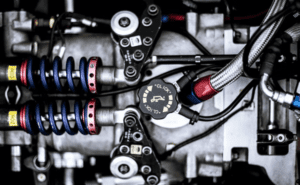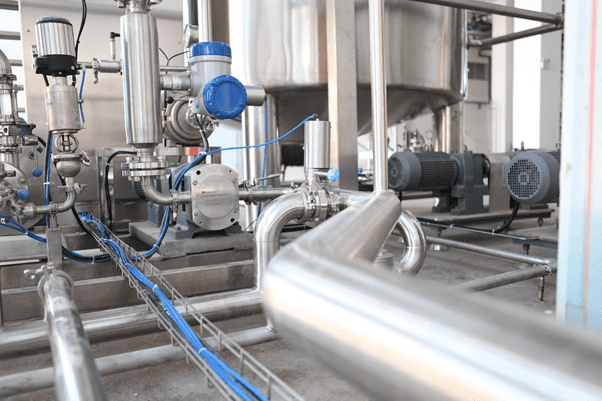When your machine, no matter what it is, needs repairs, you take it to a mechanic or a repair professional. You trust that they know what he or she is doing and will make the right choices for your machine. But what if you could do some of the repairs yourself? What if you had the knowledge and ability to fix some of the most common car problems? This article is going to teach you how to repair seal damage. Not only will this save you money in the long run, but it will also give you a sense of satisfaction and accomplishment. So let’s get started!
Why Seal Repairs Are Needed
Seal repairs are most commonly needed when there is a hole or crack in the seal. This can be caused by a number of things, including physical damage, wear, and tear, or poor installation. Physical damage occurs if you hit something while driving as it could damage the seal. Over time, seals can become worn down and damaged by weather and other elements. And, if the seal was not installed properly, it may need to be repaired or replaced. Getting the right sealing solutions will help to ensure that your car lasts longer and runs smoothly. Additionally, make sure to focus on the right sealant application process to avoid any problems.
How to Make the Right Choice When Repairing Your Seal
There are a few things you need to keep in mind when choosing the right seal. The first thing is to identify the type of damage that has been done. If there is a small hole or crack, you can simply use a sealant to repair it. However, if the damage is more significant, you will need to replace the entire seal. Another thing to consider is the size of the hole or crack. If it is large, you may need to get a new seal altogether. Finally, you should also think about the location of the damage. If it is in a difficult-to-reach area, it may be best to take it to a mechanic.
Different Solutions for Different Types of Seal Damage
Once you have identified the type of damage, you can begin to look at different repair options. For small holes or cracks, sealants are typically the best option. There are many different types of sealants available on the market, so make sure to choose one that is compatible with your machine. If the damage is more significant, you will need to replace the entire seal. This is a more difficult repair and should be done by a professional. Some materials to consider include:
- Butyl rubber: Butyl rubber is a synthetic rubber, meaning it is designed to resist degradation from heat, light, and ozone. This makes it an ideal material for car seals.
- EPDM rubber: EPDM rubber is another synthetic rubber that is often used in car seals. It has a wide range of temperature tolerance, making it ideal for use in a variety of climates.
- Neoprene: Neoprene is a type of synthetic rubber that is known for its resistance to oil and weathering. It is often used in car seals because it can withstand high temperatures and harsh conditions.
- PVC: PVC is a type of plastic that is resistant to chemicals and moisture. It is often used in car seals because it can create a tight seal that will last for years.

When to Seek Professional Help
There are some instances in which it is best to seek professional help for your seal repairs. If the damage is extensive, if the location is difficult to reach, or if you are not confident in your ability to do the repair, it is best to take it to a mechanic. Additionally, if you have any questions or concerns about the repair process, a professional will be able to help you.
For example, they can take a look at the damage and give you an estimate of the repair cost and time frame. They can also offer advice on how to avoid future seal damage. Finally, if you are not comfortable with the idea of doing the repair yourself, it is best to leave it to a professional.
How To Prevent The Need For Seal Repair In Industrial Machines
Most industrial machines require a seal to prevent fluid or gas from escaping. Over time, these seals can wear down and require repair or replacement. However, there are ways to prevent the need for seal repair in industrial machines.
- Inspect seals regularly – This will help you identify any wear and tear before it becomes a problem. Additionally, regular inspection will allow you to catch any issues early on, when they are typically easier and less expensive to fix.
- Use the right sealant – Choose a sealant that is compatible with the materials of your machinery. For example, if you have a metal seal, use a sealant that is designed for metal.
- Avoid using harsh chemicals – If you must use chemicals, be sure to clean them off afterward to prevent damage to the seals. Some chemicals, such as those found in cleaners and degreasers, can cause seals to degrade over time.
- Be careful during maintenance – When you are working on your machinery, take care not to damage the seals. This can happen if you use too much force when removing or installing parts. Seal repair is often necessary to keep industrial machines running properly.
- Keep the area around the seals clean – This will help reduce the amount of dirt and debris that can cause wear and tear.
- Store sealants in a cool, dry place – Heat and humidity can cause sealants to degrade, so be sure to store them in an appropriate environment.
- Follow the manufacturer’s recommendations for seal maintenance and replacement – This will help you keep your seals in good condition and prevent the need for repair.
Seal repairs are a necessary part of maintaining industrial machines. By following the tips above, you can prevent the need for seal repair in your machinery. Additionally, make sure to inspect seals regularly and use the right sealant for the job to keep your industrial machines running smoothly.

Recent Comments